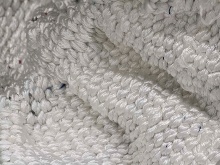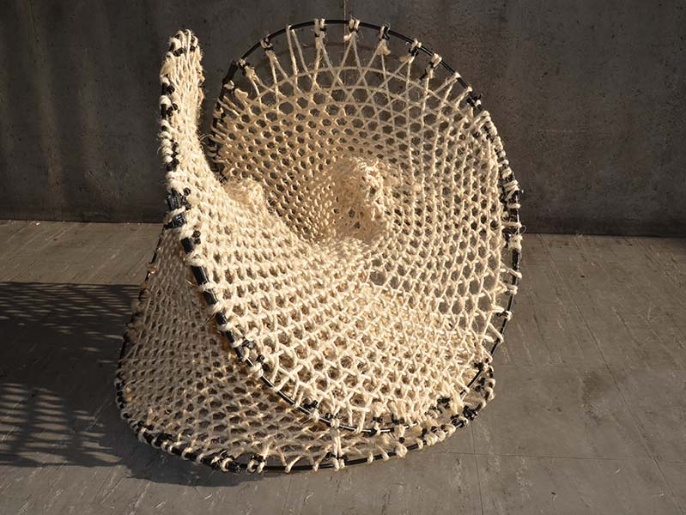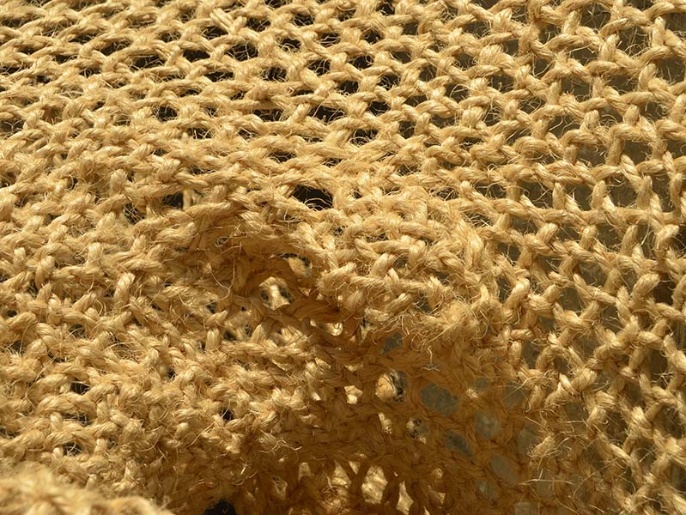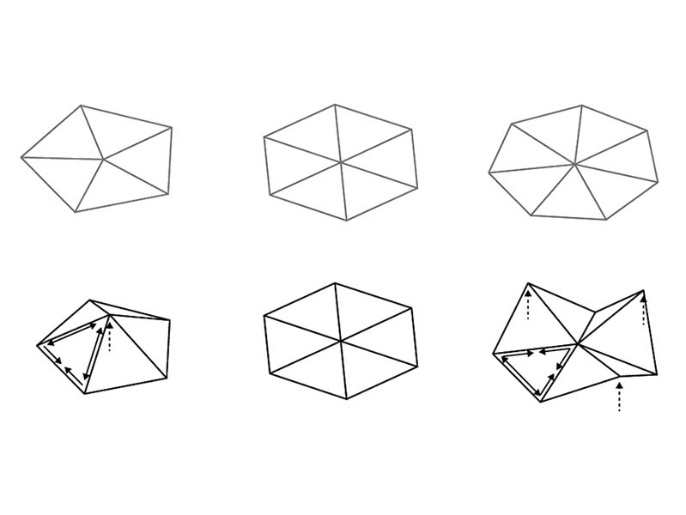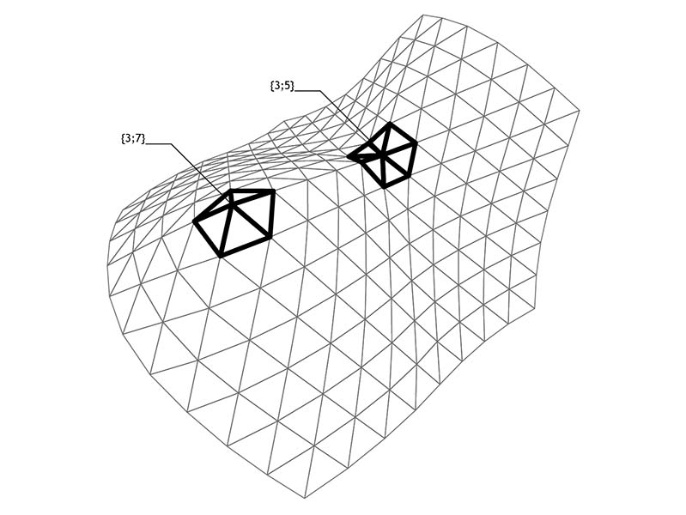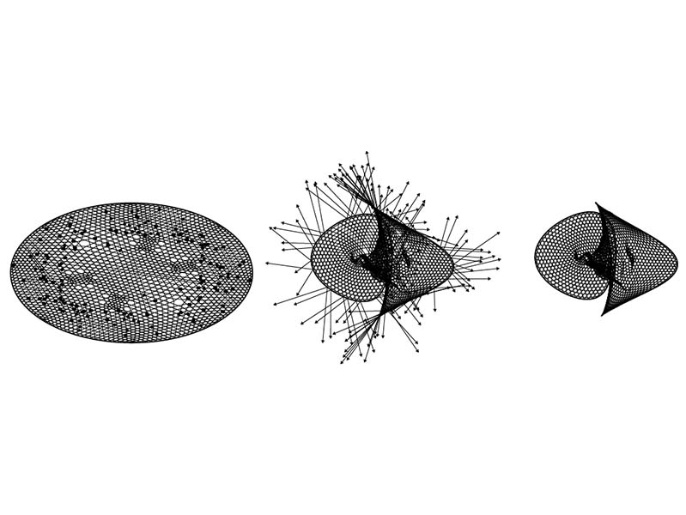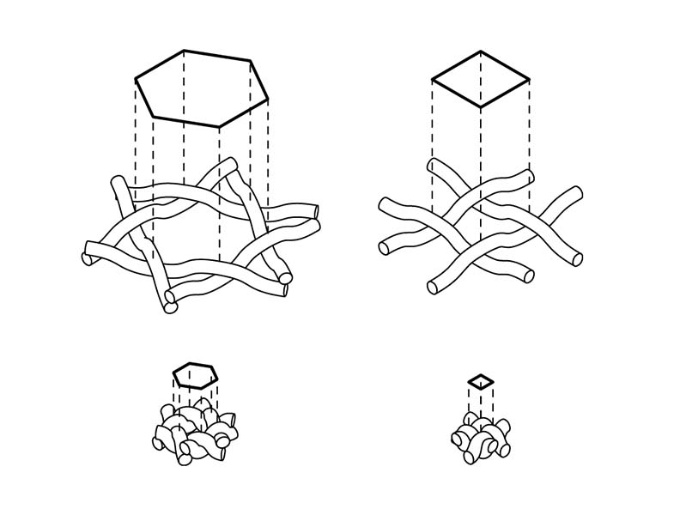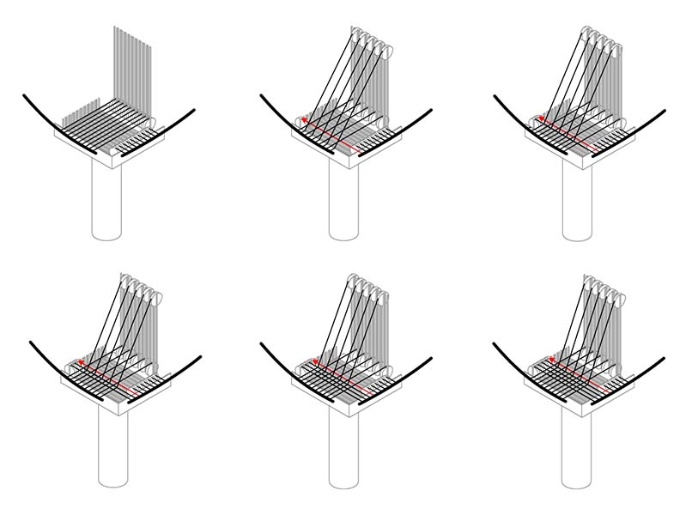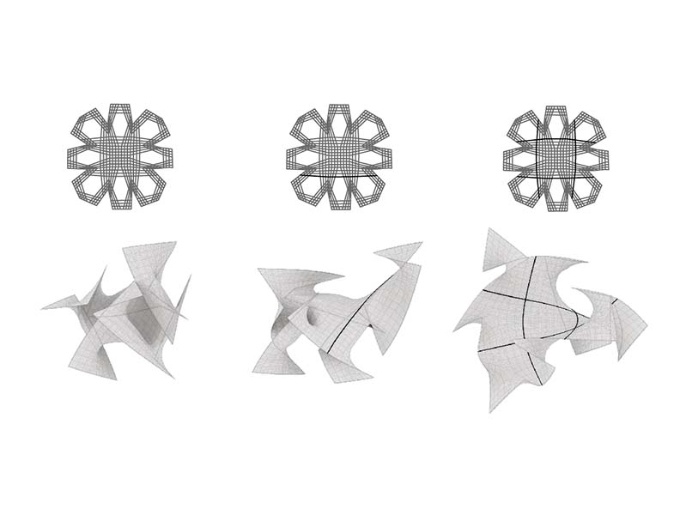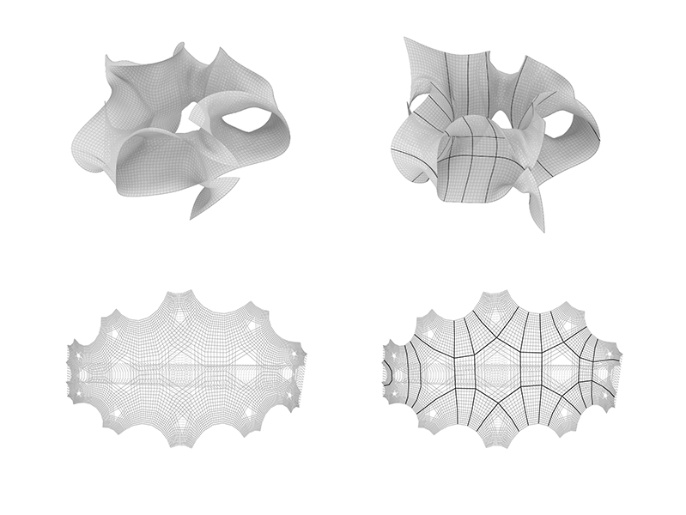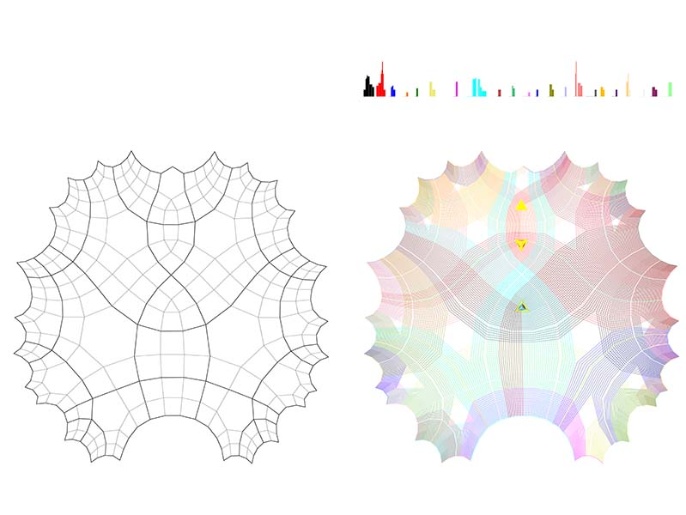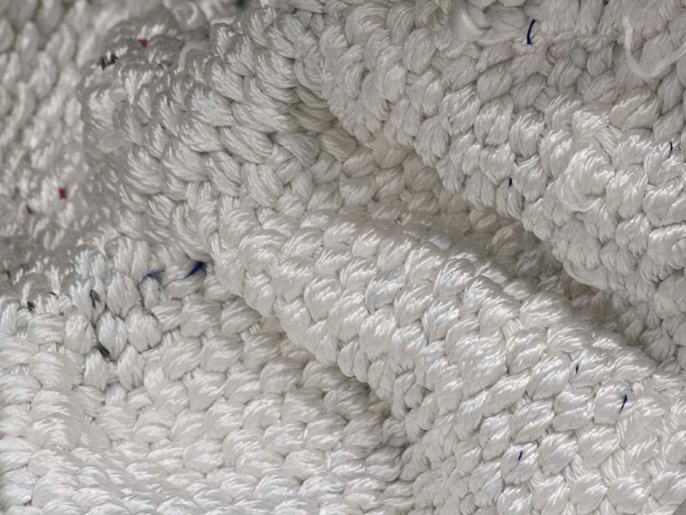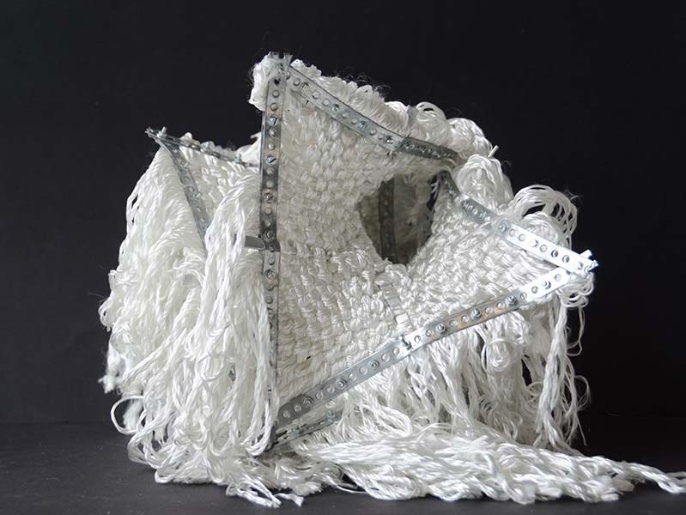Encoded Surfaces - Topological Design of Woven Hybrid Textiles
The project explores a generative approach to designing complex double-curved woven textile surfaces by defining the topological pattern of their thread networks. Motivated by the relatively unexplored potentials of highly articulated non-Euclidean geometry in architecture, different techniques were examined for solving the non-trivial representation, simulation and fabrication problems related to such woven structures.
Fabric weaving patterns determine clear topological relationships between the crossing nodes of the fibers. This enables an abstract representation of the textile network as a geometric tessellation. Utilizing different topological principles, this tessellation can be customized to produce geometries with differentiated local Gaussian curvature. This is accomplished by either increasing or decreasing the amount of vertices or polygonal faces in specific areas of a two-dimensional diagram and subsequently applying dynamic relaxation to equalize all edges of the tessellation in three-dimensional space.
Using this method for the strategic definition of curvature, different possibilities were explored for the implementation of the weaving process and the equalization of the topological network in the physical textile. One of this implementations relies on the robotic fabrication of the two-dimensional woven pattern and the subsequent tightening of the threads in order to shrink their inter-nodal distances to produce the three-dimensional deformation. However, due to vast increase in excess length and fabrication space, an alternative technique was proposed. It involves the separation of the textile in two-directional quadrants and their successive weaving on a loom-like platform. Both methods offer interesting potentials for re-thinking current standardized industrial fabrication processes and expanding the morphological range of architectural textiles.
Furthermore the project explores how double-curved woven structures can be strategically reinforced through integrated rigid elements. Depending on how these elements are positioned along specific axes of the topological network, the predefined form behavior can be stabilized in different well-defined states.
ICD Diploma Project 2014: Encoded Surfaces - Topological Design of Woven Hybrid Textiles
Boyan Mihaylov
Thesis Advisers: Moritz Dörstelmann, Marshall Prado
Thesis Supervisor: Prof. Achim Menges
Second Supervisor: Prof. Jan Knippers
The project explores a generative approach to designing complex double-curved woven textile surfaces by defining the topological pattern of their thread networks. Motivated by the relatively unexplored potentials of highly articulated non-Euclidean geometry in architecture, different techniques were examined for solving the non-trivial representation, simulation and fabrication problems related to such woven structures.
Fabric weaving patterns determine clear topological relationships between the crossing nodes of the fibers. This enables an abstract representation of the textile network as a geometric tessellation. Utilizing different topological principles, this tessellation can be customized to produce geometries with differentiated local Gaussian curvature. This is accomplished by either increasing or decreasing the amount of vertices or polygonal faces in specific areas of a two-dimensional diagram and subsequently applying dynamic relaxation to equalize all edges of the tessellation in three-dimensional space.
Using this method for the strategic definition of curvature, different possibilities were explored for the implementation of the weaving process and the equalization of the topological network in the physical textile. One of this implementations relies on the robotic fabrication of the two-dimensional woven pattern and the subsequent tightening of the threads in order to shrink their inter-nodal distances to produce the three-dimensional deformation. However, due to vast increase in excess length and fabrication space, an alternative technique was proposed. It involves the separation of the textile in two-directional quadrants and their successive weaving on a loom-like platform. Both methods offer interesting potentials for re-thinking current standardized industrial fabrication processes and expanding the morphological range of architectural textiles.
Furthermore the project explores how double-curved woven structures can be strategically reinforced through integrated rigid elements. Depending on how these elements are positioned along specific axes of the topological network, the predefined form behavior can be stabilized in different well-defined states.
ICD Diploma Project 2014: Encoded Surfaces - Topological Design of Woven Hybrid Textiles
Boyan Mihaylov
Thesis Advisers: Moritz Dörstelmann, Marshall Prado
Thesis Supervisor: Prof. Achim Menges
Second Supervisor: Prof. Jan Knippers


